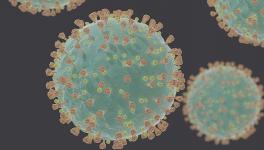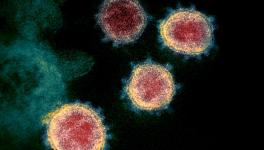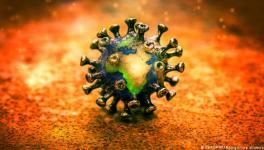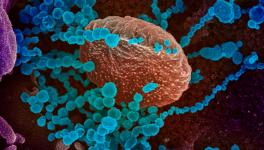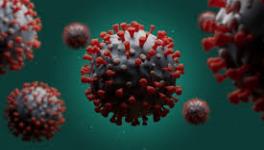SARS-CoV-2: Structure of the Spike Protein Determined on Intact Virion for the First Time
The novel coronavirus uses a specific protein called the Spike protein or S to attach itself to a human cell and inject its genetic material inside. The S protein is hence a key protein in viral replication. For the first time now, the structure of S and its distribution on the surface of the virus cell has been determined on intact virion or viral particles, as per a study published in Nature.
Until now, whatever knowledge about S protein was available was based on modified proteins that were expressed in cells. This means the S protein’s gene is made to express in laboratory cells and this gene produces the S protein. Any protein is produced by its corresponding gene when the gene is expressed in a cell. After the protein is produced, it is purified and isolated and its structure is studied. The new study does not express the protein from its gene in a cell, but it imaged the detailed structure of S on an intact virion. A virion is the entire viral particle that is capable of replication and having its outer proteins and the genetic material.
The novel coronavirus’s S protein exists as a trimer. A protein in its active structural form can exist as an assembly of multiple chains of its basic structure, commonly known as peptide chain. In a trimer, three such peptide chains are assembled to provide the active structural form.
The S trimer undergoes conformational changes at multiple levels. Before getting attached to the host cell, it has a different structure and after attaching, it heavily rearranges its structure so that fusion of the viral cell surface and the host cell surface becomes easier.
The S trimer has a portion on it that can recognise a specific location on the surface of the host cell. The special portion of S trimer is called the receptor binding domain (RBD). The RBD recognises the ACE2 receptor, another protein on the host cell surface. Notably, the lower respiratory tract cells are abundant with the ACE2 receptor and as a result, the S trimer RBD has little in finding them. And we have the surge of viral replication in the lower respiratory tract region. Other organs also have the ACE2 receptor.
The latest study says that the S trimer is not uniformly distributed on virions. The study finds a small sub population of virions where the S trimer is in small numbers, but a larger fraction of virions contains more S trimers. This finding is different from the earlier structural studies where the S protein was studied in expressed proteins. The distribution of S protein on the viral cell surface was also not determined in previous studies.
As far as the structure of S is concerned, the current study and the previous studies on purified and expressed proteins show close resemblance. The S protein can adopt either a closed conformation or an open conformation.
The Nature study used cryo Electron Microscopy and Tomography to see the detail structure and distribution of S protein.
Studying the conformational states of a crucial protein provides a base for understanding how neutralizing antibodies could interact with the S protein of the novel coronavirus both during infection and vaccination.
Get the latest reports & analysis with people's perspective on Protests, movements & deep analytical videos, discussions of the current affairs in your Telegram app. Subscribe to NewsClick's Telegram channel & get Real-Time updates on stories, as they get published on our website.









